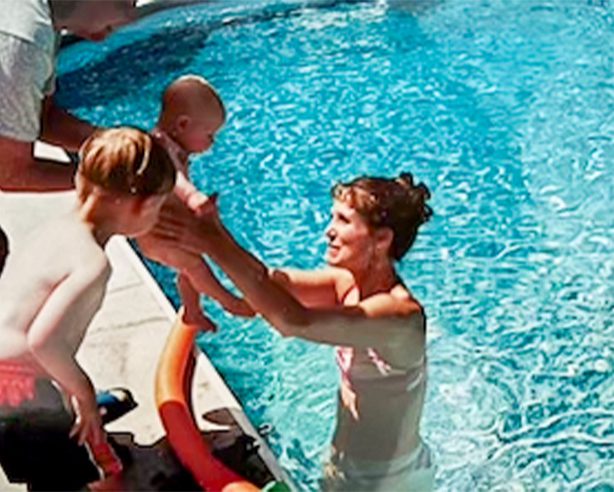Written by Jennifer, a patient living with WHIM syndrome.
###
I’m in my sixties – but it wasn’t until a decade ago that I learned the name of the rare condition I’ve been living with since birth.
Throughout my entire life, I have struggled with unexplained and chronic infections.
A difficult diagnostic journey can, at times, come with the territory in rare disease. In the absence of any answers on what my condition was, I – like many others in the rare disease community – was given a blanket diagnosis for years. “Broad immunodeficiency” is what I was told I had. In my mind, that was just code for “medical mystery.” I consider myself lucky that over the course of my life my disease became better understood.
I have WHIM syndrome, a rare primary immunodeficiency disorder that prevents white blood cells from moving out of the bone marrow and into general blood circulation and fighting infection. “WHIM” is an acronym for warts, hypogammaglobulinemia, infections, and myelokathexis. These are the most common manifestations of the disease, although they are not necessarily seen in all patients. It’s estimated there are only 1000 of us in the United States with WHIM syndrome.
My Childhood – The Science Experiment
In my youth, the reason behind my infections was unknown, and I had to pay the price of essentially being “studied.”
I remember regularly having foot sores and being told to soak my feet in salt water. Sinus infections were normal for me and required once-a-month trips to the hospital for water lavages to flush out my sinuses. I got canker sores, blood infections – you name it. At times it felt like I got everything except answers.
My condition was a mystery, and physicians tried to manage and understand it to no avail. The only thing they could tell me was that I had severely low white blood cell counts. Doctors at one point even thought I had childhood leukemia. I underwent chemotherapy, radiation, and countless bone marrow biopsies – painfully taken directly from my sternum – in the quest to better understand what was going on in my body. One of the worst experiences I recall as a teen was being admitted to a major research hospital for three days in isolation while they performed a variety of tests on me to get to the bottom of my condition (unsuccessfully). I felt like a science experiment.
It was during my teen years that I learned the value of finding an activity to take my mind off my health challenges and channel it into something that made me feel better. For me, that was swimming. Swimming was hugely beneficial for me because it made my aches go away and cleared up my sinuses. I felt – and still do, to this day – better in the water. It’s critical to find some activity, I believe, that can help you better cope with the challenges of disease.
I also learned the importance of giving physicians as much context as possible to make my appointments and discussions with them productive. I like to keep a small notebook with me to record what I am experiencing with my condition so I can always be ready to share that information if needed. It also helps keep me honest and better listen to my body – how long have I really been experiencing that pain in my leg?
Nothing Whimsical About It
As an adult, my infections persisted.
Before having children, I asked immunologists about the risk for passing on the condition – the general consensus at the time was that I was one-of-a-kind and wouldn’t pass the condition onward. That turned out to be inaccurate. Both my son and grandson have WHIM syndrome.
But having this genetic condition has helped me better understand what my son and grandson are going through and to advocate for them. There was a particularly harrowing moment in my son’s youth when he was being poked and prodded in the hospital and I was able to quickly intervene. Physicians and nurses are all working to help as best they can, but I believe it’s critical to make your voice heard when those situations have negative impact on your (or a loved one’s) overall wellbeing.
A pivotal moment in my own journey with the disease came when I had a near-deadly battle with the H1N1 virus over a decade ago. Having my condition, I had few defenses against the H1N1 virus – it slowed me down almost to the point of killing me. It took other people telling me the change they saw in me to get me to realize something was seriously wrong. If it weren’t for others insisting on me going to the hospital, I might not be here today. It’s important to know your body well enough to understand when something is wrong and not write it off.
I ended up with a heart catheter and almost lost my foot. But it was during this time that I finally learned the name for the disease that impacted so much of my life. Because my situation was so grave, doctors ended up doing genetic testing and discovered I have WHIM syndrome. Finally, an answer.
Genetic testing helped me, my son and grandson all learn this specific diagnosis and gave our doctors more information to treat the condition.
Today, I’m just grateful that my son and grandson are living in a time when our condition is better understood, and they won’t be subjected to the challenges I faced. I am also grateful for the knowledge I can pass on to them and others about navigating challenging health journeys.
Editorial support for Jennifer’s story was provided by X4 Pharmaceuticals
 About the Author: Growing up in Indiana, Jennifer developed a passion for swimming, despite her health challenges. After high school, Jennifer received a swimming scholarship to Indiana University, the swimming mecca at the time. In 1980 she secured a place on the U.S. Olympic women’s swim team. While the Olympics were ultimately boycotted by the U.S. that year, swimming continued to play central role in her life. She went on to meet her loving husband and have two children, a son and daughter. The family moved to Milwaukee where Jennifer worked as a surgical technician/assistant for 35 years. She is now a grandmother to eight grandchildren, keeping her busier than ever!
About the Author: Growing up in Indiana, Jennifer developed a passion for swimming, despite her health challenges. After high school, Jennifer received a swimming scholarship to Indiana University, the swimming mecca at the time. In 1980 she secured a place on the U.S. Olympic women’s swim team. While the Olympics were ultimately boycotted by the U.S. that year, swimming continued to play central role in her life. She went on to meet her loving husband and have two children, a son and daughter. The family moved to Milwaukee where Jennifer worked as a surgical technician/assistant for 35 years. She is now a grandmother to eight grandchildren, keeping her busier than ever!








